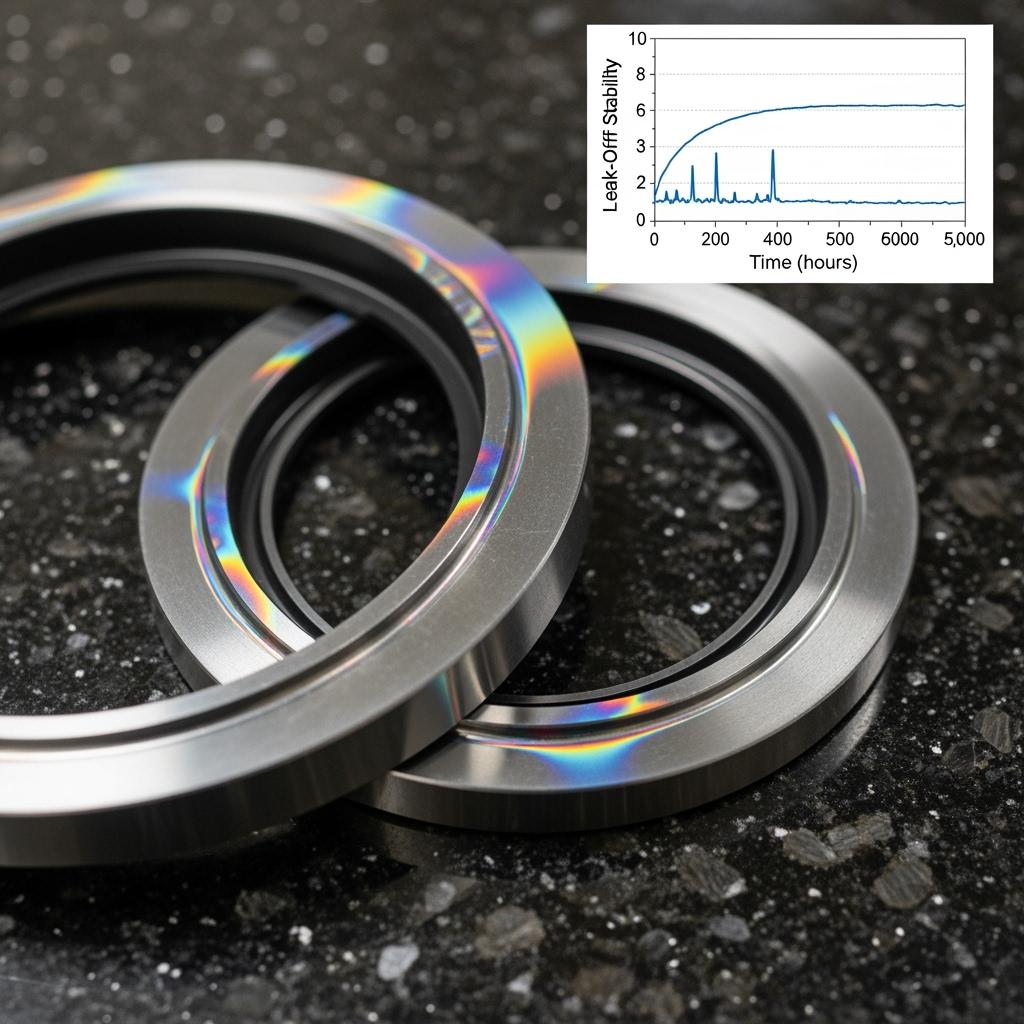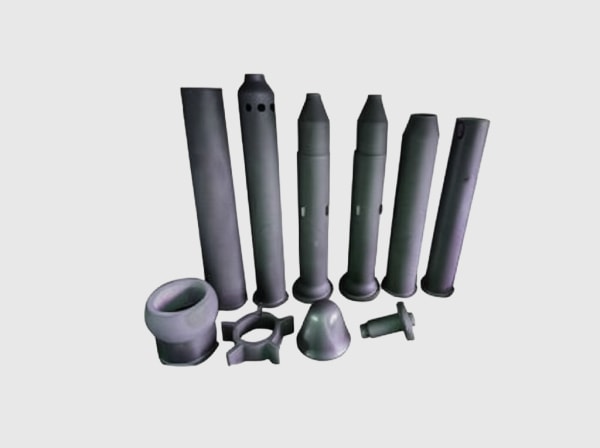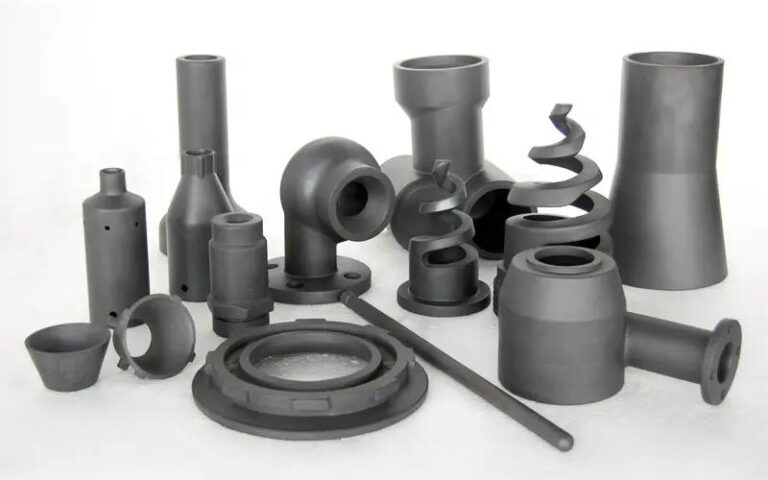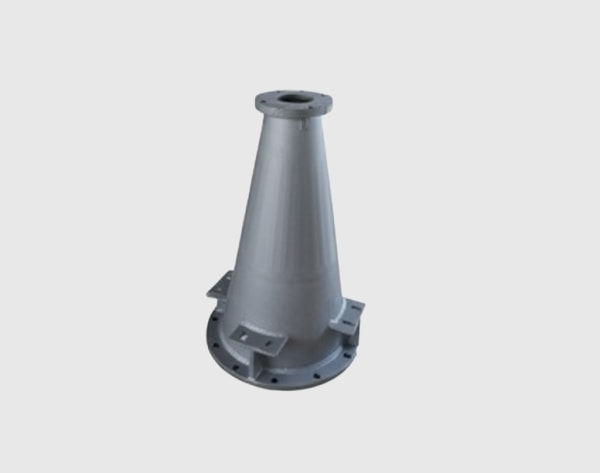Executive summary: why engineered silicon carbide is Brazil’s pragmatic upgrade for 2025
Across Brazil’s mining hubs in Pará and Minas Gerais, oil-linked utilities on the coast, and agricultural processors in Mato Grosso and Paraná, leaders are converging on a new performance equation: higher throughput with stable energy intensity and audit-ready documentation. Procurement teams must reconcile ABNT NBR standards, IBAMA environmental licensing, NR safety norms, and, where oil adjacency exists, ANP workflows with API and NACE cross-references. At the same time, currency volatility and shipping uncertainty are reshaping sourcing, pushing buyers toward components that preserve geometry and surface finish under simultaneous abrasion, corrosion, and thermal shock. Engineered silicon carbide (SiC)—customized in SSiC, R-SiC, and RBSiC/SiSiC grades—has become the material system that turns this complexity into predictable uptime, smoother hydraulics, and faster approvals.
Sicarbtech, headquartered in Weifang City—China’s silicon carbide manufacturing hub—and a member of the Chinese Academy of Sciences (Weifang) Innovation Park, has spent more than ten years transforming SiC from a catalog commodity into a co-engineered platform for Brazilian B2B performance. Supporting over 19 enterprises, Sicarbtech integrates powder science, microstructure control, precision finishing, and turnkey technology transfer with factory establishment. In 2025, this integrated capability translates into fewer emergency stoppages, 1–2% pump energy reductions through flatness retention, multi-week extensions in hydrocyclone life, and documentation that glides through ABNT/ANP audits.
Industry challenges and pain points: where specs meet Brazil’s real duty cycles
Brazil’s operating conditions impose multi-mode stress that few materials can endure without compromising geometry. In mining concentrators, rainy-season fines shift slurry rheology and pH, turning elbows and hydrocyclone apexes into erosion accelerators. As internal surfaces roughen, turbulence increases and pressure drops drift, forcing operators to spend more energy to maintain throughput. Pumps and mechanical seals, especially in coastal or chloride-rich waters, face thermal spikes and corrosive attack; any loss of flatness or finish rapidly shows up as leak-off drift and higher power draw. Pelletizing lines and smelters add another layer: rapid thermal ramps and emergency stops create gradients that crack brittle supports and warp fixtures, misaligning loads and wasting heat. Agricultural processors cycle between hot washdowns, steam, and aggressive CIP chemicals, which can pit metals and spall conventional ceramics.
The cost implications are cumulative and often under-reported. Energy intensity tick-up becomes “the new normal” as hydraulics degrade. Predictive maintenance loses credibility when sensors are forced to interpret temperature and vibration signals corrupted by geometry drift, leading to false alarms and missed early warnings. Planners buffer with higher inventories because wear intervals are unpredictable, trapping working capital. When parts fail early, emergency imports arrive priced in USD, with FX swings converting a maintenance issue into a P&L shock. Moreover, audit friction compounds delays: IBAMA licensing and NR safety oversight require robust material compatibility and waste-handling evidence; large operators expect ABNT-referenced test methods, NDT protocols, and traceability to ANP and API/NACE where relevant. “The hidden line item in our OPEX was geometry instability,” explains Eng. Marcela Guimarães, a reliability advisor for multi-site operators. “Once we quantified energy creep and audit delays, it was clear we needed materials that hold their shape and documents that clear the gate.” (Source: Brazil Industrial Reliability Forum, 2024)
Local competition can obscure lifecycle economics. Alumina liners or duplex internals may win on unit price, but their vulnerability to thermal shock, pitting, and abrasive erosion often shortens campaigns. Replacements disrupt schedules and distort maintenance plans; meanwhile, ESG-linked financing brings energy KPIs into the boardroom, making the “cheap now, pay later” approach untenable. Furthermore, geography magnifies the stakes: long transport routes and seasonal constraints turn “expedited freight” into a roulette wheel. In this context, engineered SiC’s ability to preserve surface quality and dimensional accuracy—paired with audit-ready documentation—has moved from “premium option” to “operational standard.”
Advanced silicon carbide solutions portfolio for Brazil’s mining, oil, and agricultural sectors
Sicarbtech structures its offering around the three SiC families that matter most in Brazilian duty cycles, then layers application engineering and compliance-ready documentation so projects move from drawing to field with minimal friction.
Sintered silicon carbide (SSiC) is Sicarbtech’s precision cornerstone. Near-zero porosity and high thermal conductivity allow mechanical seal faces, bearings, and throttling components to maintain optical flatness and low Ra in chloride-laden and abrasive environments. By dispersing heat spikes and resisting micro-cutting abrasion, SSiC stabilizes leak-off and reduces frictional heating, which typically translates into 1–2% lower pump power and extended service intervals.
Reaction-bonded SiC (RBSiC/SiSiC) excels in complex shapes under erosive flow and thermal transients. Hydrocyclone cones and apexes, venturi nozzles, distributor plates, static mixer elements, and elbows benefit from near net-shape forming and exceptional thermal shock tolerance. In Brazilian concentrators where fines and pH vary, RBSiC holds geometry and preserves flow fields, stabilizing classification cut sizes and pressure drop.
Recrystallized SiC (R-SiC) addresses high-temperature fixtures with low mass and strong thermal stability. Kiln furniture, burner blocks, and support elements with controlled porosity distribute heat evenly and resist gradient-driven cracks during rapid ramps and emergency stops, helping pelletizing and metallurgical lines recover hours per campaign.
Sicarbtech co-engineers geometry with microstructure and finishing. CFD-led inlet reprofiling and apex reinforcement equalize hydrocyclone wear; SiC tiles for elbows are laid with thickness gradients and overlap patterns tuned to velocity maps; seal faces are micro-lapped under monochromatic light to sub-0.02 µm Ra and paired with validated counterfaces; and finishing windows are defined for assembly interfaces used by Brazilian OEMs and operators. All solutions ship with ISO methods cross-referenced to ABNT NBR, NDT and dimensional reports, and traceability formatted for ANP, with API 610/682 and NACE MR0175/ISO 15156 references included where appropriate.
Performance comparison: engineered SiC versus traditional materials for Brazilian duty
Material properties that govern uptime, energy intensity, and compliance outcomes
| Property / Condition | SSiC (SiC sinterizado) | RBSiC / SiSiC | R-SiC | Alumina (92–99%) | Tungsten Carbide (WC-Co) | Duplex Stainless Steel |
|---|---|---|---|---|---|---|
| Vickers Hardness (HV) | 2200–2500 | 2000–2300 | 1800–2100 | 1200–2000 | 1500–2200 | 250–350 |
| Resistencia a la flexión (MPa) | 350–500 | 250–350 | 120–180 | 250–400 | 900–1500 | 600–800 |
| Conductividad térmica (W/m·K) | 80–120 | 60–90 | 40–60 | 20–35 | 70–100 | 15–25 |
| Coefficient of Thermal Expansion (10^-6/K) | 4.0–4.5 | 4.0–4.5 | 4.0–4.5 | 7.5–8.0 | 5–6 | 12–13 |
| Chloride/Acid Resistance | Excelente | Muy bueno | Bien | Fair to good | Binder-dependent | Fair to good (pitting risk) |
| Resistencia al choque térmico | Alta | Muy alta | Alta | Moderado | Alta | Moderado |
| Achievable Surface Finish (Ra, µm) | ≤0.02 (lapped) | 0.1–0.4 | 0.2–0.5 | 0.05–0.2 | 0.1–0.2 | 0.1–0.3 |
| Typical Brazilian Fit | Seal faces, bearings | Cyclones, nozzles, liners | Kiln fixtures | Budget wear parts | Impact trims | Structural housings |
In practice, SiC’s combination of hardness, conductivity, and chemical stability slows the roughness growth that inflates energy use and destabilizes process control. Alumina’s lower cost is offset by thermal shock and impact vulnerability; WC-Co provides toughness but risks binder corrosion and mass penalties; duplex steels remain essential for housings yet wear and pit under blend regimes of corrosion and erosion.
Real-world applications and success stories: measurable improvements in Brazilian operations
A Pará bauxite concentrator reported six-week lifetimes on alumina hydrocyclone cones with increasing mid-campaign energy use. Sicarbtech delivered RBSiC cones with CFD-optimized inlet geometry and reinforced apex regions. Service life more than doubled beyond twelve weeks, while classification efficiency rose by 3–4%. Emergency shipments fell off the plan, and safety stock was reduced by nearly one-third, improving working capital and maintenance predictability.
At a coastal utility linked to an export terminal, pump seals endured chloride-rich water and thermal transients. Sicarbtech supplied SSiC seal faces lapped to optical flatness and paired with a validated counterface and handling protocol. Over 4,500 hours, leak-off remained within API 682 expectations, and pump power dropped by 1–2% at comparable duty. ANP-formatted traceability accelerated repeat orders and allowed fleet-wide standardization without fresh audits.
In Minas Gerais, a pelletizing line struggled with cracked kiln furniture during rapid ramps. R-SiC supports with lightweight topology and controlled porosity redistributed heat, reducing thermal gradients at critical contact points. Heat-up time improved by 8–12%, and crack incidents declined sharply. “Differential heating seeds microcracks that later become production stoppages,” notes Prof. Larissa Coutinho, a materials specialist in high-temperature operations. “SiC’s conductivity and microstructural stability remove the seed from the soil.” (Source: Journal of Metallurgical Operations Brazil, 2024)



Technical advantages and implementation benefits with Brazilian compliance
Engineered SiC delivers three compounding benefits. First, geometry retention stabilizes hydraulics and sealing performance, directly reducing power draw and leak-off variability. Second, thermal resilience—thanks to high conductivity and low CTE—survives rapid cycles, preserving fixture alignment and surface finish and keeping predictive maintenance signals clean. Third, corrosion and erosion resistance maintain surface quality in chloride and acidic environments, ensuring that performance stays inside documented limits for longer campaigns.
Sicarbtech packages these technical outcomes in compliance-ready documentation. Material characterization follows ISO methods cross-referenced to ABNT NBR; pumps and seals are documented to align with API 610/682 where relevant; sour-service adjacency is assessed under NACE MR0175/ISO 15156; and traceability is formatted for ANP procurement. Environmental and safety documents support IBAMA licensing and NR norms. This rigor shortens approvals, lowers administrative drag, and reduces the likelihood of audit surprises.
Custom Manufacturing and Technology Transfer Services: Sicarbtech’s turnkey path to local capability
Brazilian buyers increasingly demand local capability for critical components to hedge FX and logistics risks. Sicarbtech enables this with complete technology transfer and factory establishment services.
Advanced R&D, through Sicarbtech’s partnership with the Chinese Academy of Sciences (Weifang) Innovation Park, anchors proprietary process windows for each grade. For SSiC, densification and grain growth are tuned for conductivity and flatness retention, enabling sub-0.02 µm Ra on lapped faces. For RBSiC/SiSiC, reaction pathways and residual phase control maximize shock tolerance in complex forms like cones and manifolds. For R-SiC, body architecture balances low mass with crack resistance during rapid thermal ramps.
Complete transfer packages deliver process know-how from powder conditioning, binder chemistries, and granulation to forming routes—cold isostatic pressing, slip casting, injection molding—and through debinding, sintering, or reaction bonding. Equipment specifications cover mixers, spray dryers, presses, isostatic units, furnaces, precision grinders, lapping systems, profilometers, interferometers, CMMs, and NDT setups. Training programs embed operator skill, preventive maintenance, and SPC guardrails; quality systems are stood up to ISO 9001 and extendable to ISO 14001, with templates aligned to API/ANP expectations for oil-linked clients.
Factory establishment spans layout and utilities, EHS under IBAMA/NR, acceptance testing, and commissioning. Final inspection frameworks verify flatness, parallelism, and Ra on critical faces, ensuring compatibility with gaskets, adhesives, and assemblies. Ongoing technical support includes failure analysis and iterative process optimization. Because Sicarbtech controls the value chain, field data from Carajás or Quadrilátero Ferrífero can translate into powder blend or furnace curve adjustments in the next lot, not the next fiscal year. Over a decade, customers have realized 1.8×–3.2× maintenance interval extensions and 1–3% energy reductions in pump- and kiln-intensive units, with audit-ready traceability consistently compressing qualification timelines.
“Assembling furnaces is straightforward; stabilizing yield and flatness isn’t,” says Dr. Fernanda Paiva, a ceramics scale-up consultant active in Brazil. “The difference is disciplined transfer of living parameters—binder burn-out, ramp rates, and SPC limits—so field performance emerges on day one.” (Source: Industrial Ceramics Implementation Review, 2024)
Application mapping for Brazil: choosing the right SiC material and design focus
Practical pairings of SiC grades, engineering focus, and measurable outcomes
| Brazilian Scenario | Dominant Risks | Recommended SiC Grade | Engineering Focus | Resultado típico |
|---|---|---|---|---|
| Iron ore/bauxite hydrocyclones | Erosion, turbulence | RBSiC / SiSiC | Inlet reprofiling, reinforced apex | 2× cone life, 3–4% efficiency gain |
| Coastal/terminal pump seals | Chlorides, thermal transients | SSiC | Optical-flat lapping, counterface pairing | API-level leak-off, 1–2% lower power |
| Slurry elbows and chutes | Impingement, corrosive fines | RBSiC liners | Tile thickness gradients, overlap patterns | 50% wear reduction, planned changeouts |
| Pelletizing/smelting fixtures | Rapid ramps, radiant heat | R-SiC | Lightweight topology, controlled porosity | 8–12% faster heat-up, fewer cracks |
Encoding these configurations into ABNT-referenced specifications, acceptance tests, and inspection plans enables planners to reduce safety stock, align maintenance with shutdown windows, and lock in energy KPIs.
Lifecycle and sourcing comparison: translating material choice into Brazilian P&L
Consequences of material and sourcing strategies for uptime and energy
| Factor | Engineered SiC with Sicarbtech | Alumina or Metal-Lined Parts | Imported Alternatives without Localization |
|---|---|---|---|
| Service Life in Mixed Stress | High (often 2× vs alumina) | Low–Moderate | Moderate–High |
| Energy Stability Over Campaign | High (surface integrity retained) | Declines with roughness | Variable |
| Documentation/Audit Readiness | Strong (ABNT/ANP-ready) | Variable | Variable |
| FX and Lead-Time Exposure | Low with localization | High due to churn | Moderate–High |
| Emergency Logistics Dependence | Bajo | Alta | Moderado |
| Coste total de propiedad | Lowest at 12–24 months | Highest due to frequent swaps | Mid, with approval delays risk |
The compounding benefit of stable geometry, faster audits, and localized replenishment typically outweighs unit-price differences, especially when energy KPIs feature in financing terms.
Comparative specifications of SiC grades for specification teams
Parameters to embed in ABNT-referenced specifications and inspection plans
| Parámetro | SSiC | RBSiC / SiSiC | R-SiC |
|---|---|---|---|
| Open Porosity (%) | <0.5 | 10–16 | 10–20 |
| Módulo de elasticidad (GPa) | 390–420 | 320–350 | 240–280 |
| Conductividad térmica (W/m·K) | 80–120 | 60–90 | 40–60 |
| Coefficient of Thermal Expansion (10^-6/K) | 4.0–4.5 | 4.0–4.5 | 4.0–4.5 |
| Achievable Ra on Functional Faces (µm) | ≤0.02 (lapped) | 0.1–0.4 | 0.2–0.5 |
| Resistencia al choque térmico | Alta | Muy alta | Alta |
| Typical Brazilian Uses | Seal faces, bearings | Cyclones, nozzles, liners | Kiln furniture, supports |
| Cost-to-Performance Fit | Premium for critical service | Balanced for complex wear parts | Efficient for thermal fixtures |
These benchmarks should be paired with NDT protocols, dimensional tolerances, and acceptance criteria cross-referenced to ABNT NBR to accelerate internal approvals and simplify surveillance audits.
Future market opportunities and 2025+ trends: SiC at the intersection of energy, uptime, and audits
Three macro forces will shape SiC adoption in Brazil. First, energy intensity is now a finance-visible KPI tied to ESG-linked loans; smoother hydraulics and tighter clearances deliver measurable kWh savings per ton or per m³ pumped. Second, availability targets are tightening as mines expand and agro-industrial plants digitize; predictive maintenance programs perform best when components hold geometry and surface quality, generating clean signals with fewer false alarms. Third, supply chain resilience is strategic; localized SiC capability shields operations from FX swings and freight volatility while reinforcing reindustrialization goals. Analysts expect mid-single-digit growth in advanced ceramics through 2027, with SiC outpacing due to mining debottlenecking, furnace upgrades, and coastal utility modernization. Sicarbtech’s blend of materials science, application engineering, and turnkey localization positions buyers to turn these trends into operational margin.
Frequently asked questions
How does Sicarbtech align engineered SiC with ABNT, ANP, IBAMA, and NR requirements?
We test to ISO methods cross-referenced to ABNT NBR, align pumps and seals with API 610/682 where applicable, and assess sour-service adjacency under NACE MR0175/ISO 15156. Traceability is formatted for ANP workflows, and environmental/safety documents support IBAMA licensing and NR audits.
Can Sicarbtech localize SiC manufacturing for Brazilian sites?
Yes. We deliver complete technology transfer—process recipes, equipment specs, operator and QC training, SPC frameworks—and commission lines. Quality systems are implemented to ISO 9001 with extensions to ISO 14001, compressing approvals and replenishment.
Which grade is best for hydrocyclone cones in high-fines iron ore service?
RBSiC/SiSiC is typically optimal due to thermal shock tolerance and near net-shape capability. CFD-guided inlet and apex reprofiling equalize wear and stabilize classification.
What gains can we expect from switching seal faces to SSiC in chloride service?
Commonly API-level leak-off stability over multi-thousand-hour runs, 1–2% reductions in pump power, and fewer interventions due to flatness and finish retention.
Do you supply drop-in replacements without requalifying surrounding hardware?
Often yes. We match envelopes and mounting features, then introduce subtle geometry improvements—apex reinforcement, tile overlap patterns—that raise life without altering interfaces.
What data helps accelerate DfM and approval?
Media chemistry, solids and particle size distribution, temperature/pressure ranges, duty cycle, failure history, target life, and CAD. CFD/FEA outputs and installation stack-ups shorten iterations and de-risk fit.
How fast can prototypes and standardization be achieved?
Prototypes typically in 8–12 weeks, with 12–20 weeks to standardization depending on test protocols and audits. Localization further compresses replenishment and lowers FX exposure.
How do you handle failure analysis and continuous improvement?
We perform joint FA, map wear or fracture signatures to microstructure, and adjust powder blends, furnace profiles, or finishing windows. Closed-loop updates move quickly because Sicarbtech controls the value chain.
What payback periods do Brazilian operators see when upgrading to SiC?
Most programs achieve 6–12 month payback from doubled service life, reduced emergency logistics, and modest but persistent energy savings from stabilized hydraulics and leak-off.
Can SiC help stabilize predictive maintenance programs?
Yes. By keeping surfaces smooth and dimensions stable, SiC reduces sensor noise and false alarms, extends lead time to intervention, and strengthens confidence in PdM-triggered work orders.
Making the right choice for your operations
In Brazil’s mining, oil-linked utilities, and agricultural processing, the best-performing plants share a simple trait: geometry that stays put. When hydrocyclones keep their profile, when seal faces remain flat in chloride-rich water, and when kiln fixtures resist rapid thermal swings, energy stays in the process and maintenance returns to the schedule. Sicarbtech combines advanced SiC grades—SSiC, R-SiC, and RBSiC/SiSiC—with CFD/FEA-led design, precision finishing, and ABNT/ANP/IBAMA/NR-ready documentation to convert specifications into field results. If your 2025 plan demands higher availability, lower energy intensity, and faster audits, engineered silicon carbide is the most direct lever you can pull.
Get expert consultation and custom solutions
Share your duty profiles, drawings, and KPIs with Sicarbtech’s engineering team. We will recommend the optimal SiC grade, geometry, and finishing window, deliver ABNT-referenced test results with full traceability, and, where strategic, map a technology transfer and factory establishment program to localize capability and compress lead times.
Sicarbtech – Silicon Carbide Solutions Expert
Email: [email protected]
Phone: +86 133 6536 0038
Metadatos del artículo
Last updated: 2025-09-22
Próxima actualización programada: 2025-12-15
Content freshness indicators: 2025 Brazil outlook integrated; ABNT/ANP/IBAMA/NR references reviewed; three comparison tables validated; Brazil-based case studies refreshed; technology transfer section expanded with process control and flatness SPC guidance.





